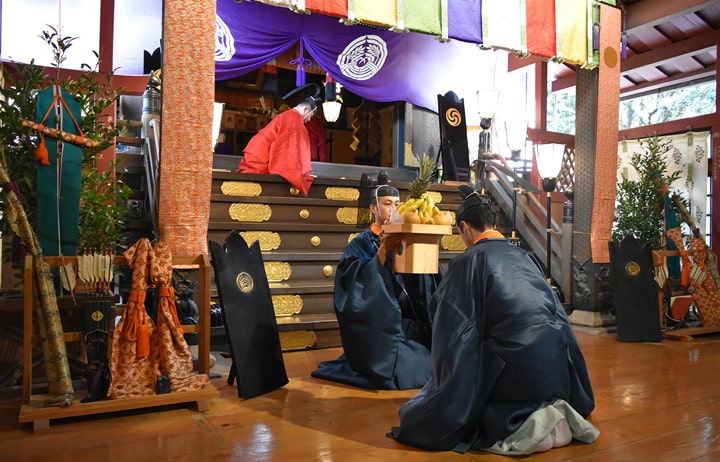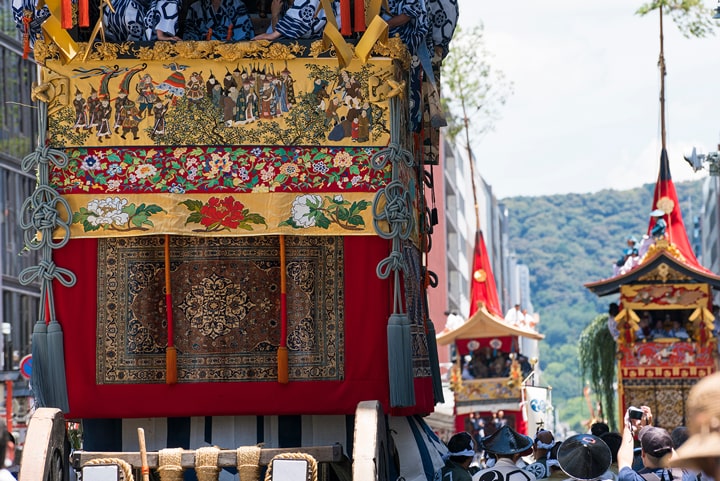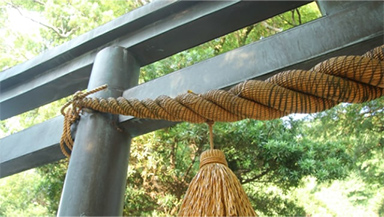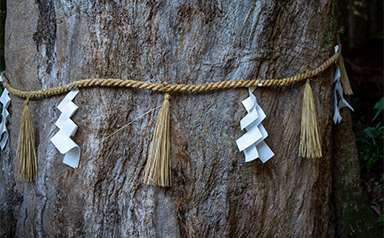Matsuri
Matsuri are held throughout Japan to offer gratitude to the kami for their benevolence and support, and to pray for the happiness, health and prosperity of the community. The Japanese have venerated kami since ancient times, often in sacred places of natural beauty, where the rituals and offerings formed the origins of matsuri.
Jinja matsuri play an integral role of Shinto tradition and are occasions of solemn ritual as well as festive celebration. Many matsuri are associated with agricultural rites, important occasions for individual jinja and seasonal customs. Local traditions vary considerably from jinja to jinja.

Matsuri involve the reciting of prayers to the kami, as well as the offering of sacred food, and include important purification rites for those in attendance. The jinja grounds are often decorated with fresh rope (shimenawa), and white paper streamers (shide). Shinto priests spiritually prepare themselves for the matsuri by abstaining from certain foods, ritually bathing and secluding themselves in priest quarters to concentrate on their religious duties.
Across Japan, many matsuri are celebrated with processions of portable jinja (mikoshi) and floats. During these celebrations the enshrined kami is transferred to a mikoshi which is then carried through the area where the parishioners reside. It is believed that these matsuri bring the kami and people together, rejuvenating the community and delighting the deities, who in turn bestow blessings on each household in the neighbourhood. It is important to note that in ancient times, these processions were often solemn ceremonies to revere the kami and experience a profound sense of awe in their presence. This tradition involved carrying the mikoshi in a dignified and austere manner. There are still jinja in Japan that observe this type of matsuri.

Matsuri come in a variety of forms including rice-planting ceremonies (otaue) and horseback archery (yabusame). Many of them were initially seen as offerings to the kami as a form of divine entertainment and contain solemn aspects as well as more light-hearted features. Although these may seem like contradictory elements, the blessings received from the kami remain the same.
Matsuri remain to this day a way for both the jinja and community to strengthen their bonds. They are an ancient tradition that revitalizes the enshrined kami and all participants involved.
Glossary
Chief priest of a jinja

A twisted straw rope that serves to delineate sacred space and objects. Shide, white paper streamers in a folded zigzag pattern, are often attached to shimenawa.

Shide are white paper streamers in a folded zigzag pattern. They are most often attached at intervals to shimenawa.


